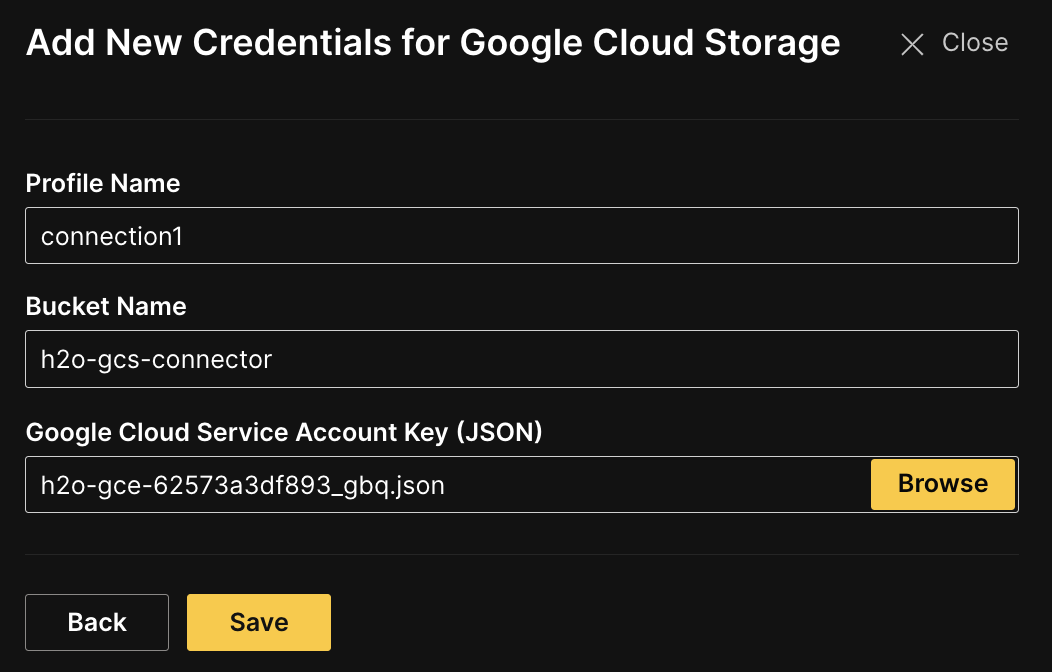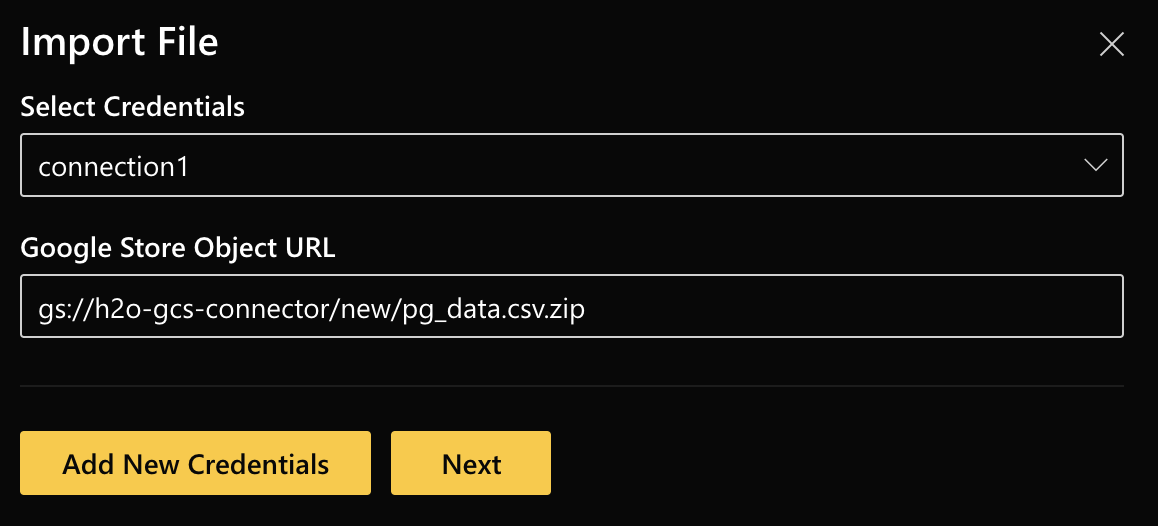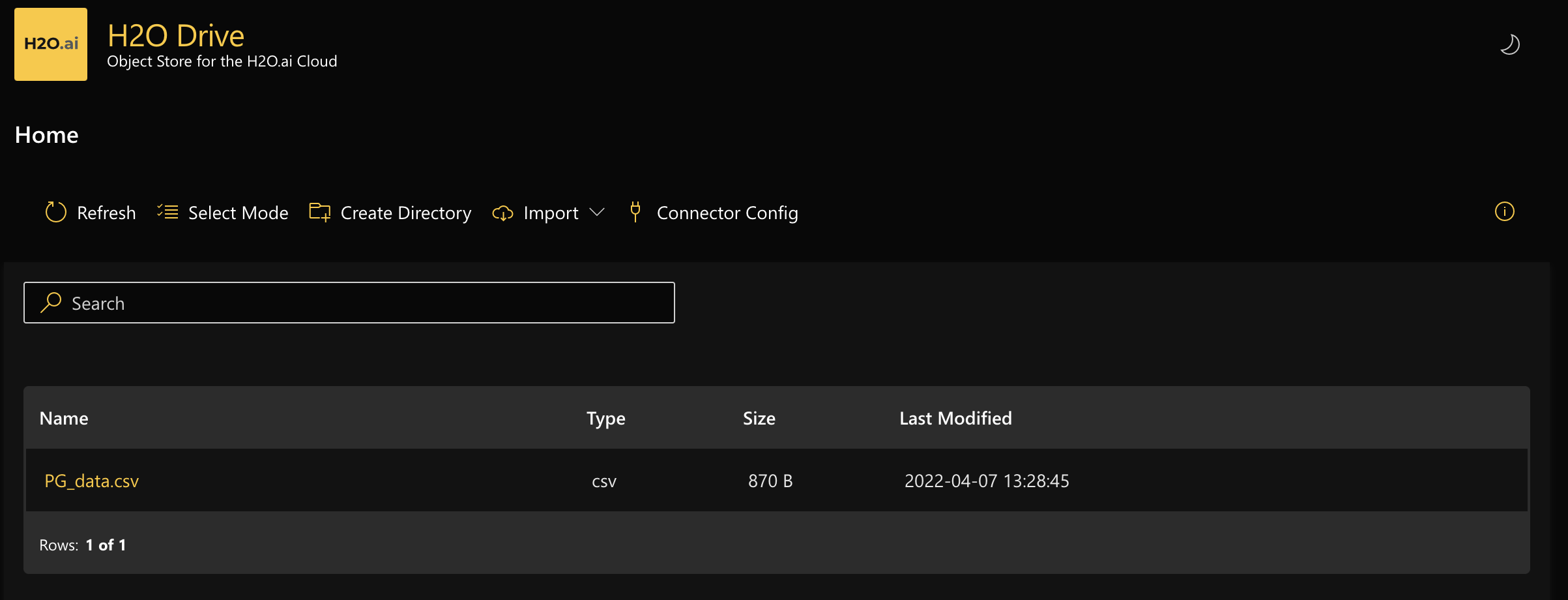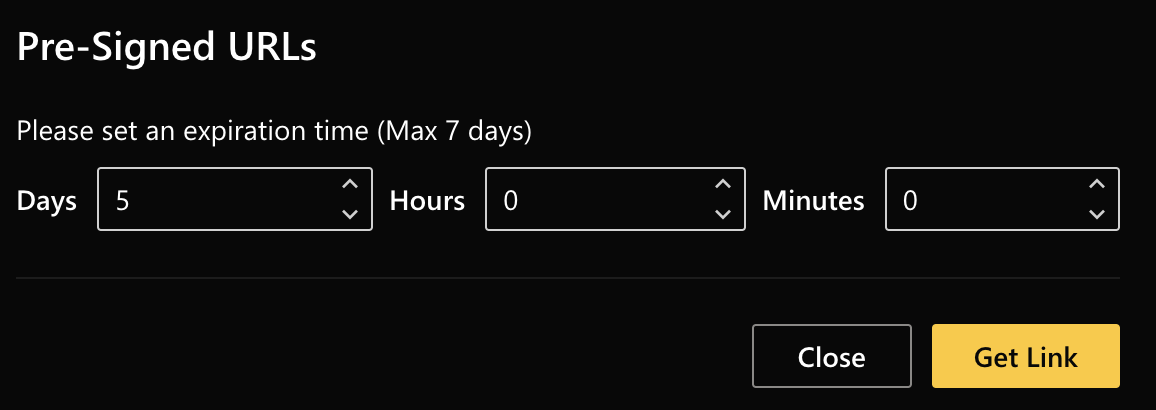Import Google Cloud Data
This tutorial guides you through importing data from a Azure Blob Storage Resource into your H2O Drive workspace. Follow the steps below to connect to your datasource and import the data.
Prerequisites
Before you begin, you will need:
- An Azure Blob account
- A signed URL to the Google Cloud Storage resource
Step 1: connect the Google Cloud Storage resource
Let's connect to your Google Cloud resource.
- On the H2O Drive home page, click Import.
- Select Google Cloud Storage from the dropdown list of sources.
- If you have not added a credentials profile already, click Add New Credentials.
- Enter the following details to connect to the Google Cloud project.
- Profile Name: A suitable name for your personal credentials profile. This is the name that will appear on the dropdown list (which you saw on the previous screen) when you are selecting the credentials profile you wish to use.
- Bucket Name: The name of the Google Cloud storage bucket.
- Google Cloud Service Account Key (JSON): By default, there is a service account key file created for every Google Cloud Project. Click Browse and upload the relevant project's service account key
.jsonfile here.
- Click Save.
Step 2: select the data object
- Select the credentials profile that you just created from the dropdown list.
- Enter the Google Store Object URL in the format
http://bucket_name/directory/object_name.
- Click Next.
You have successfully imported a dataset. You should now be able to see it displayed on H2O Drive under the specified filename.

Step 3: share the dataset
- Select the imported dataset by clicking on the filename.
- Click Get Link to get a pre-signed link that you can share with other users or applications that need to access this dataset.
- Set the expiration time and click Get Link.

- Copy the link that appears and click Close. You can now use the copied link to share this dataset.
You can import this dataset using the pre-signed link to H2O-3, Driverless AI, or share it with someone else who can then import it onto their H2O Drive instance using the HTTP download option.
Feedback
- Submit and view feedback for this page
- Send feedback about H2O Drive to cloud-feedback@h2o.ai